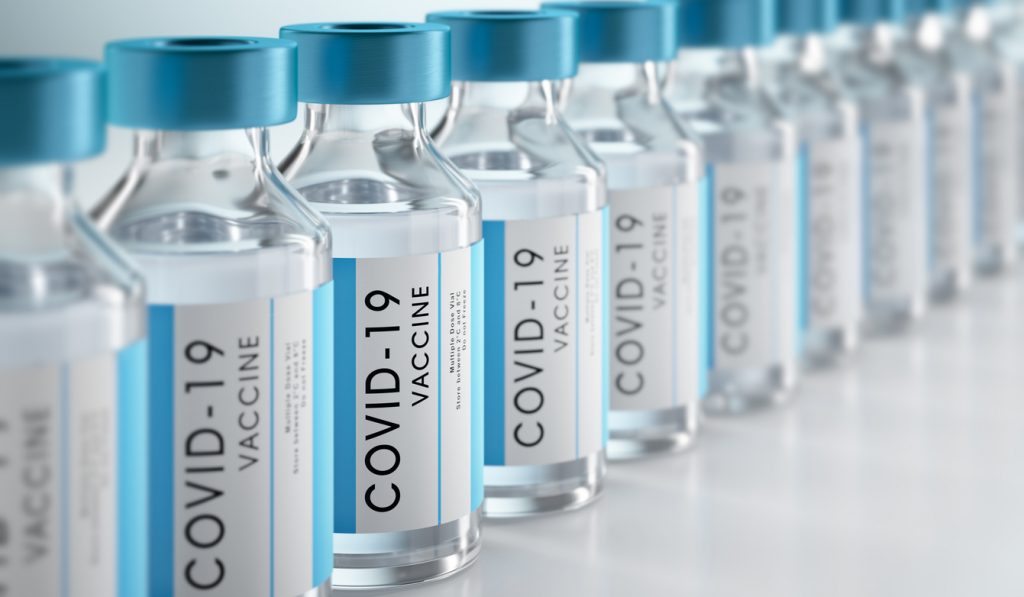
21 Jul COVID-19 in Prisons Seriously Affects Surrounding Communities
The Center for Disease Control was quick to issue caution about the spread of novel coronavirus; the threat remains notably higher in closed communities like hospice and college campuses last year. Controlling the spread of the virus behind bars proved especially difficult. Scientists have also made note of how COVID-19 in prisons affects local communities and exacerbates the pandemic for all Americans. Now, with the Delta variant causing renewed alarm, it is important to understand how infection inside prisons could fuel outbreaks around the country.
Scientists prove that COVID-19 in prisons affects everyone around the facility.
By the summer of 2020, researchers found that COVID-19 spread faster in prisons than in almost any other setting; this is due to overcrowding and unsanitary conditions. Across the country, state and federal prisons became hotspots for coronavirus outbreaks. In fact, data shows that infection rates in prisons were more than five times higher than the general population by July 2020. That lead health professionals like Brendan Saloner to call for reducing prison populations amid the pandemic.
Despite warning signs, the country was slow to react to the risk of infection inside prisons. This was due, in large part, to misinformation from policymakers that downplayed the risk to community members when COVID-19 spreads in prisons. According to Prison Policy Initiative, infection inside prisons significantly affected caseloads and infection rates; the impact was most pronounced in areas with dense populations of incarcerated individuals. Their researchers found that “mass incarceration contributed to more than half a million cases inside and outside correctional facilities over the summer of 2020.”
In December 2020, Prison Policy Initiative issued a report. The authors break down the impact of COVID-19 in prisons and how it affects overall infection rates for the United States. The report urged for greater use of clemency, depopulating prisons through various measures to help reduce super spreader events behind bars. This report echoed others dating back to the first months of the pandemic, all of which directly link public health to health in the correctional system. The impact of COVID-19 proved especially pronounced in communities of color due to racial disparities both within the prison system and among prison staff.
Releasing incarcerated individuals does not threaten public safety.
Despite the risk of infection within prisons, researchers found that depopulating prisons during the pandemic did not negatively affect communities. One report in The Lancet: Infectious Diseases argued that reentry programs are inherently beneficial; however, the unique conditions around COVID-19 in prisons require a targeted approach to release. To reduce impact to surrounding communities, the report urged for investment into stable housing and regular access to medical care. These supports, the others believe, could minimize the risk of spread from decarceration and reduce super spreader events inside prisons.
Vaccination rates and the Delta variant suggest continued issues with infection in prisons.
While more than half of all adults in America are now at least partially vaccinated, the rate of vaccination in prisons continues to lag behind the national average. Prison staff are high on the CDC priority list, but some are resistant to vaccinating prisoners. Epidemiologists indicate that we need to vaccinate at least 70% of the population to control the spread of COVID-19. The rate of vaccination behind bars is still too low to control COVID-19 in prisons, which puts entire communities at risk.
To make matters worse, both incarcerated people and prison staff often refuse the vaccine; the most common reason for refusal is a distrust in the vaccine itself. While some states offer incentives for adults who choose to vaccinate, those incentives do not include justice-impacted people. Because of this, and the inability to properly distance inside prisons, the CDC continues to identify incarcerated people as vulnerable to infection from COVID-19.

The Delta variant is already proving more infectious than previous COVID-19 variants.
According to Kathy Katella, writing for Yale Medicine, the Delta variant does not pose a threat to vaccinated individuals. However, Katella explains, it is almost twice as contagious as the original version of the virus. Based on the reports cited above, COVID-19 in prisons spreads significantly faster than in the general public. There is not sufficient data to assess the threat of the Delta variant in United States prisons yet; however, Katella notes a major disparity in vaccinations that could mean a massive spread of the new variant in the southern states.
Given the impact that COVID-19 in prisons had on surrounding communities, the potential threat to areas around prisons is high. Dr. F. Petty Wilson warns that high infection rates from “hyperlocal outbreaks” could overwhelm local health care systems. When this happens, it’s not just incarcerated individuals who are at risk. The potential for exposure and even death increases for everyone in the community. Wilson has hope, though, that these outbreaks could spur vaccination rates. Whether or not this affects incarcerated people depends on the availability of the vaccine and state regulations.
Based on data from the COVID Prison Project, vaccination rates inside prison now closely mirror or outpace vaccination rates in the local population. They note, though, that the data could be misleading. This is because their numbers are based on individuals who have received at least one dose of the vaccination. There is currently no way to track whether or not individuals are fully vaccinated if they received a vaccine that requires two doses.
States vary on where incarcerated individuals fall on priority lists.
The COVID Prison Project recently released an analysis of policies for all 50 states regarding COVID-19 vaccination in prisons. This analysis highlighted the disparity from state to state. While most include incarcerated individuals in the highest priority categories, others like Texas and Florida do not include incarcerated people in vaccination plans at all. More than 20% of states, in fact, do not specifically list people in prison on their respective vaccine roll-out plans.
Not surprisingly, their analysis shows that some of the same states who fail to prioritize incarcerated individuals also refuse to share data about vaccination rates. Thus, it is impossible to know the current risk of COVID-19 in prisons run by these states; they include Florida, Kentucky, Louisiana, Michigan, Mississippi, Texas and Vermont.
Several doctors renewed the call for vaccination and decarceration in The New England Journal of Medicine. “To protect the safety of incarcerated people, guards, and the general public,” they iterate, “health experts have long called for large-scale decarceration. Decarceration measures that were used relatively early in the pandemic…have been shown to be safe — it is mass incarceration itself that threatens public safety…Now, with the rollout of vaccines, public debate has increasingly shifted toward the vaccination of incarcerated people. But several factors suggest that vaccination alone will not be enough to stop carceral outbreaks.”
The authors go on to address concerns about vaccine hesitancy and the continued spread of COVID-19 in prisons. Ultimately, they highlight why vaccination alone is not sufficient to control new outbreaks of the virus inside prisons. Based on their research, the only way to protect both incarcerated individuals and the communities around them is to accelerate efforts to reduce prison populations. Failure to do so could put millions of Americans at risk.

